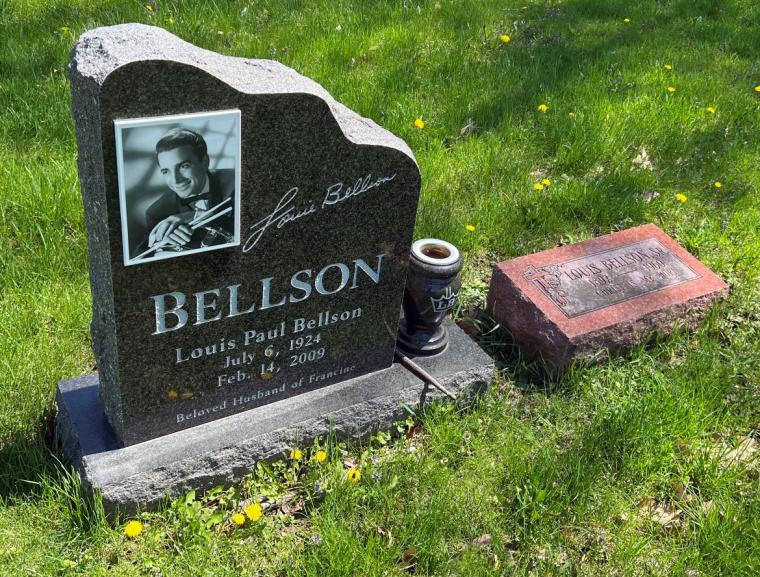
Louie Bellson drawing by Bruce Walters
“Not only is Louie Bellson the world’s greatest drummer … he’s the world’s greatest musician.” – Duke Ellington
Luigi Paul Balassone Sr. moved his music store to 1711 Fifth Avenue in Moline, Illinois, when his son Louie was a child. As Louie later said, “My dad had taught me practically every aria from every Italian opera.” He added, “It’s all music, whether it’s opera or jazz, and maybe you can hear a little of both in what I play.”
By the time he was 14, Bellson was playing drums at a local nightclub, the Rendezvous. He had wanted to be a drummer since he was three, when he watched a parade with his father. When the drums passed by, Louie told his father that’s what he wanted to learn to play.
While still in high school, Bellson won a national drum competition sponsored by Gene Krupa, beating out some 40,000 competitors. His unparalleled career as a drummer soon took flight when he was recruited to play for Ted Fio Rito’s dance band. Though he had to first wait three months for his graduation, he joined the band at the historic Florentine Gardens nightclub in Hollywood.
Over the next two decades, he performed with the world’s top Big Bands – outfits led by Benny Goodman, Tommy Dorsey, Harry James, Duke Ellington, and Count Basie – and even squeezed in several years in the military during World War II.
Dorsey placed Bellson on a revolving platform so the audience could better watch his virtuoso drumming, especially his pioneering use of double bass drums.
He left Dorey’s band in 1949 to study composition. His analysis of scores by Ravel, Bartok, Stravinsky, and other classical modernists enabled him to pen works such as “The Hawk Talks” and “Skin Deep,” jazz classics that became integral to his next band, the Duke Ellington Orchestra.
As Bellson said, “Duke’s band was different than all the others. It was like a family. The guys had been with him for years. When I joined, the band members treated me like I was their son.
“Duke took a big risk hiring me. I was the only white musician in his band. During our first 1951 tour, just before we headed south for Birmingham, Alabama, he said ‘We’re going down South, so we’re going to make you a Haitian.’ That’s how they described me so we wouldn’t wind up in trouble. I stayed in hotels where they stayed. It was a great time.”

Bellson also met his future wife, singer/actress Pearl Bailey, while playing with Ellington in London. He left the band shortly afterward to become her musical director.
Bellson would perform on more than 200 albums, 60 of which were recordings of his own band. He composed and arranged more than a thousand songs. He also published more than a dozen books on drums and percussion – even a book of poetry. His numerous honors included the NEA Jazz Masters Award from the National Endowment for the Arts.
When my uncle Jan was 14 years old, my grandfather took him to a church in west Rock Island to play with other musicians. Louie Bellson, already a legendary drummer in 1952, must have seen something in his enthusiasm and abilities as a drummer, because he gave him the drum set. A few years later, my dad recalls seeing Jan play before a crowd at the Bettendorf High School – fearful that Jan’s heart would burst as he played, surrounded by students shouting out encouragement.
Tragically, Jan died from an epileptic seizure on Valentine’s Day in 1956. He had just turned 18. The drum kit given to him by Bellson just a few years before was, in turn, given to Bettendorf High School.
Bellson died 53 years later, also on Valentine’s Day, from complications from Parkinson's disease and a broken hip. When I visited his grave in Riverside Cemetery (Section 12, Lot 748CG, Grave 13) in Moline, I saw that someone had left behind a drum stick. Louie is buried next to his father.
This year marks the 100th anniversary of Louie Bellson's birthday on July 6, 1924. Rock Falls, Illinois, will host a centennial celebration on Saturday, June 8, featuring a great lineup of acts that includes Davenport’s Josh Duffee & His Orchestra and the Jerry Criss Band, the Yorkville Big Band, the Rock River Jazz Band, and Steve Smith & Vital Information.
I have tried to carry forward my uncle’s love of the arts throughout my life. In that, I hold Louie Bellson’s kindness and desire to inspire in the highest regard, as important as his many accolades.
Bruce Walters is a Professor Emeritus in Art conferred by Western Illinois University.
The Reader regrets to announce that this will be Bruce Walters' final “Buried Stories” article for the foreseeable future, as he is currently working on a book and additional projects. We thank Bruce for his wonderful work over the years, and wish him the best on all of his future achievements!










